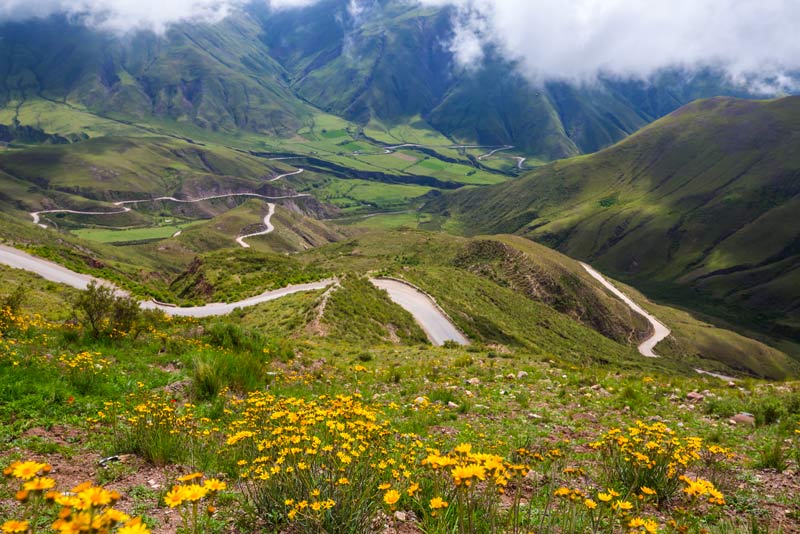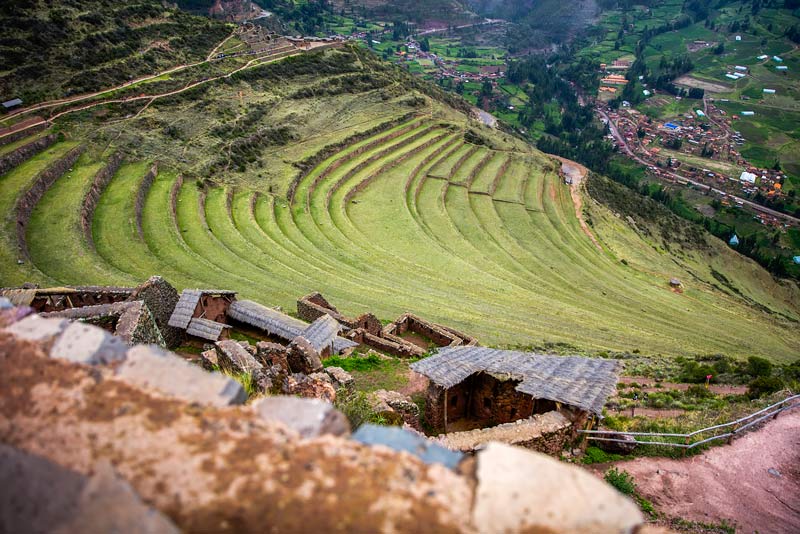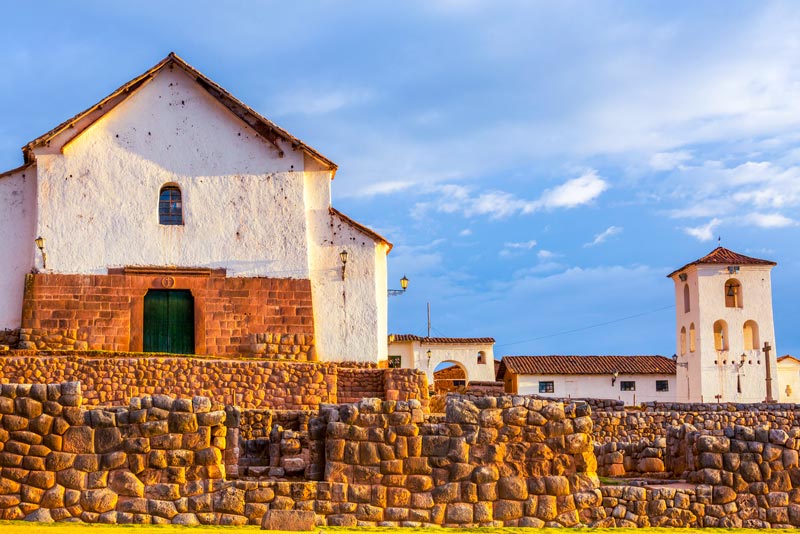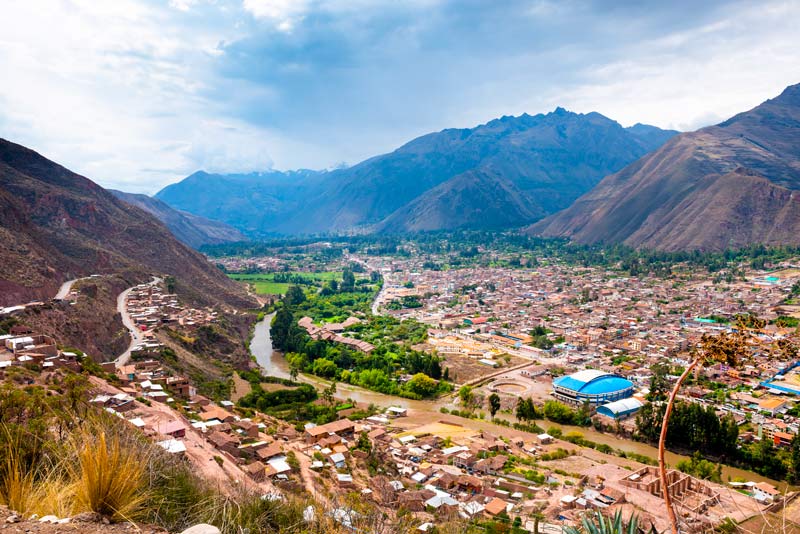Why is it called Sacred Valley of the Incas?
Throughout the Sacred Valley, we find iconic destinations brimming with biodiversity, in a privileged location that offers unique climates, highly valued since Inca times. As a result, even their main cities were built there. Discover the reasons that made and continue to make this valley the most valued for centuries.
- Reasons for the importance of the Sacred Valley of the Incas
- Why is it called the Sacred Valley of the Incas?
- The Sacred Valley of the Incas
- Recommendations for your visit to the Sacred Valley of the Incas
- Questions and Answers
Tour of the Sacred Valley of the Incas
The Sacred Valley is one of the must-see destinations during your stay in Cusco. If you’re short on time, remember that you can visit it on day tours, visiting the most emblematic sites such as the Pisac archaeological complex, the Ollantaytambo fortress, and the Chinchero archaeological site. You can also add the experience of visiting the Maras Salt Mines and the Moray circular terraces, all in a single day trip. Don’t miss the opportunity to visit the magical Sacred Valley through Boletomachupicchu and enjoy one of the best experiences of your life.
Reasons for the importance of the Sacred Valley of the Incas
| Reasons | Description |
|---|---|
| Microclimate Diversity and Fertility | The Sacred Valley enjoys a privileged location, with altitudes that create a wide variety of microclimates. This has allowed for the development of an abundant and diverse agriculture, considered one of the most advanced in the world. |
| Presence of the Urubamba River | This river runs through the entire valley and was considered sacred by the Incas. Not only was it their main source of water, but it also enriched the soil and helped regulate the valley’s temperature. |
| Inca Cities and Temples | The Sacred Valley was the setting for some of the most important cities of the Inca Empire: Ollantaytambo, Pisac, Chinchero and, of course, Machu Picchu. |
| Mystical Connection | For the Incas, the valley was a mystical place. The Urubamba River represented the Milky Way (Mayu), and many of the cities and temples were built in alignment with the stars and solar events. This adds a sacred and spiritual significance. |
| Current importance | Today, the Sacred Valley remains a significant agricultural, tourist, and cultural center. The communities that inhabit the area preserve ancestral knowledge, traditional farming techniques, weaving, rituals, and festivals that keep the legacy of their ancestors alive. |
Why is it called the Sacred Valley of the Incas?
The reasons why this valley is called the Sacred Valley of the Incas are three main reasons. First, because its location makes it a place full of microclimates that allow agriculture to flourish. Second, because the majestic Urubamba River runs through it completely, representing the main source of water, providing greater soil fertility and regulating the microclimates. Lastly, because this was the site of the main cities and temples of the Incas , which meant they spent most of their lives in the vicinity of the majestic valley.
The Sacred Valley of the Incas
One of Cusco’s must-see destinations is the Sacred Valley of the Incas , a stunning place that offers the opportunity to explore its most iconic villages. Within the valley’s villages, we’ll find the most important Inca citadels, a unique biodiversity with microclimates that make it one of the most productive agricultural areas, as well as recreational and relaxing spots that offer a chance to disconnect from everyday life.
Within the Sacred Valley of the Incas we find the following towns along with their most iconic destinations:
Ollantaytambo
The town of Ollantaytambo is a must-see on your trip to Cusco. Not only is it the first stop on the way to Machu Picchu, but it’s also one of the places that best preserves Inca architecture in every corner. It’s a small town two hours from the city of Cusco. The most important sites in Ollantaytambo are:
- The Ollantaytambo fortress is the most enigmatic place in Ollantaytambo, where Inca constructions can be seen from the top of a mountain, with emblematic sites such as the agricultural terraces, the Temple of the Sun, and impressive monoliths.
- Ñaupa Iglesia, one of the most mystical destinations near Ollantaytambo. The entrance to Ñaupa Iglesia is a 15-minute drive and a 10-minute walk away. It’s a destination that will leave you with more questions than answers, with its energizing structures.
- Walking through its main streets, strolling through the streets of Ollantaytambo is a destination in itself, accompanied by small water channels that will make you feel immersed in a place full of tranquility and a lot of history thanks to the Inca walls.
- Perolniyoc Falls are a natural attraction that requires a hike beforehand. From the town of Soca, a 30-minute drive from Ollantaytambo, there’s also a 30-minute hike to reach the incredible waterfalls.
- The Pinkuylluna Archaeological Site is a structure located on one of the mountains of Ollantaytambo, visible from any angle of the town. To get there, you must take a hike of approximately 30 minutes.
Pisac
The town of Pisac is a destination to experience a part of history alongside Inca architecture and connect with a deeply mystical and bohemian destination. Located 45 minutes from the city of Cusco, it is the closest town to the Sacred Valley.
- Pisac Archaeological Complex: High above the town of Pisac, you’ll find one of the most important Inca citadels, where you’ll appreciate the full majesty of the Valley, as well as temples, ancient astronomical observatories, and architecture that will amaze you every step of the way.
- Pisac Traditional Market , one of the most iconic markets in all of Cusco, is adorned with a wide variety of colors. Visiting it will feel like you’re immersed in textiles that tell as much history as the archaeological complex itself. With textile artists who preserve traditional techniques, each piece you find will be the perfect souvenir to take home.
- Mystical centers and temples, throughout Pisac and the entire Valley, offer healing places through mystical techniques, from small steps like yoga and meditation, to larger ones in places specializing in rituals like Ayahuasca and San Pedro.
Chinchero
The town of Chinchero is the most traditional and picturesque place in the entire Sacred Valley, where ancestral traditions are deeply rooted, which is why you feel like you’ve traveled back in time during your visit. Filled with many destinations to explore, it’s a must-see on your visit to Cusco, which is approximately an hour from the city.
- Chinchero Archaeological Park , located near the Palace of Inca Túpac Yupanqui, we find impressive architecture, with green areas that remind us how nature was so essential when building the main Inca architectures.
- Pocpoc Waterfall, this natural destination, is located about an hour from Chinchero. A simple hike will take you to learn more about the town and its traditions. The waterfall is immersed in nature, reminding us of the biodiversity of the Sacred Valley.
- Textile centers: Chinchero’s traditional culture still preserves the ancestral fabrics of ancient cultures. This is reflected in artisan centers where you can learn how textiles are made and even how they acquire those magical colors through natural dyes.
Urubamba
The capital of the Sacred Valley of the Incas, it is the main commercial distribution center throughout the entire territory, as it is located midway between all other settlements. Urubamba is approximately two hours from the city of Cusco.
- On an excursion to Maras, located just a few kilometers from Urubamba, we’ll enjoy one of the most iconic destinations in the Sacred Valley: the famous Maras salt mines, a place of breathtaking scenery where, to this day, you can take home as a souvenir the natural salt that has been there since long before the Inca era.
- Hike to Moray, as part of the tour to Maras, and a visit to the circular terraces of Moray is a must to learn a little more about how the Incas exploited the microclimates for their agriculture. Accompanied by impressive views, it’s a perfect place to take a break and rest.
- Resting places: along the Urubamba, we’ll find areas for short excursions to reach huts or fields where we can rest and disconnect from the daily noise of the city.
- Yucay is located south of Urubamba, where we find one of the best climates in the Sacred Valley. From its privileged location, we’ll find magical landscapes with all the agricultural and flora diversity of the Valley.
Calcutta
It’s one of the towns with the largest agricultural areas along the Sacred Valley. Located an hour from Cusco, its location allows you to discover places with the best sunsets thanks to the surrounding mountains. Find out what else to do in this amazing place.
- Mystical centers and temples, throughout Calca we will find places focused on meditation and healing, through rituals ranging from Ayahuasca and San Pedro, to meeting places where through music and relaxation we will discover new medicinal concepts.
- Arín Falls , located 10 minutes from Calca, is a destination immersed in a hike through nature. An uphill hike offers breathtaking views accompanied by waterfalls that add beauty to the surroundings. From here, we can enjoy a picnic, a picnic, or simply a hike filled with adventure and biodiversity.
- Huchuy Qosqo is an Inca archaeological site located at the top of Calca. Getting there involves a hiking trail that departs from the town of Lamay. From this impressive location, we can appreciate the entire valley in all its splendor, also seeing buildings such as Kallankas, agricultural terraces, and Inca residences. Camping is available at Huchuy Qosqo, making it one of the best adventures in the Sacred Valley.
Recommendations for your visit to the Sacred Valley of the Incas
- The Sacred Valley is the best place to acclimatize in Cusco, before visiting any of its destinations, such as Rainbow Mountain or the Inca Trail, which are located at high altitudes.
- Take advantage of the opportunity to take a break from your routine and reflect amidst beautiful landscapes.
- Immerse yourself in Inca culture by learning more about why the Incas built such magnificent buildings and temples.
- See the entire Sacred Valley in a single tour. Given the distances between towns, you can easily explore it. However, if you have more time, spend at least a day in each one to appreciate all they have to offer.
- Thank Pachamama (Mother Earth) for allowing you to experience such impressive places in the Sacred Valley. It’s part of the local culture and allows you to feel more connected to nature.
- Having a sensitive attitude when visiting the main temples dedicated to the Inca deities will allow you to feel ancestral energy that seems to whisper their history to you.
- Remember to stop and take in the buildings and nature in their entirety to feel more immersed in your visit.
- You can plan a tour visiting the main Inca cities and temples in the Sacred Valley. You can decide your own itinerary. Consult with our advisors and discover the magic that awaits you.
Questions and Answers
1) What makes the Sacred Valley of the Incas special?
The valley is notable for its diverse microclimates, which allow for varied agriculture; the presence of the sacred Urubamba River, which fertilizes and regulates the climate; and its archaeological legacy, as it was the site of great Inca cities and temples.
2) Why is the Valley considered sacred?
In addition to its fertility and natural beauty, the valley was considered sacred because the Urubamba River, which runs through it, was seen as a representation of the Milky Way. The astronomical alignment of its temples and buildings reinforces its mystical significance in the Inca worldview.
3) What is the importance of the Urubamba River in the valley?
The Urubamba River was not only the main source of water for agriculture, but also enriched the soil and helped moderate the microclimates. Its influence was so decisive that it was venerated as a sacred element, essential to the development of Inca life and culture.
4) What cities and archaeological sites stand out in the Sacred Valley?
The Sacred Valley is home to some of the most important architectural complexes of the Inca Empire, such as Ollantaytambo, Pisac, Chinchero, and, nearby, Machu Picchu. Each offers its own unique charm, from mountaintop fortresses to temples and traditional markets.
5) What is the relationship between microclimates and agricultural development?
The valley’s varied altitude creates distinct microclimates, allowing for the cultivation of a wide range of crops. This ability to diversify agricultural production has made the Sacred Valley one of the most fertile agricultural areas.
6) What is the value of traditions in the Sacred Valley?
The current importance of the Sacred Valley goes beyond its historical significance. Local communities maintain ancestral techniques, rituals, festivities, and traditional weaving, which enriches the experience of the destination.
7) Why is the Sacred Valley of the Incas called “Sacred”?
The name Sacred Valley is due to three main factors: the fertility and diversity of its microclimates, the presence of the Urubamba River, and the fact that it has been home to important cities and temples.
8) What is the Sacred Valley like with current tourism?
Today, the Sacred Valley is a must-see destination that combines cultural, agricultural, and adventure tourism. The integration of ancestral practices and the preservation of traditions offer visitors a unique experience, where the past and present come together in a setting of natural beauty and mysticism.
Advice from people who have been there
 By: Jacob K.
By: Jacob K.“Tour of the Valley“
“I had only one day available to visit the Valley and I was really impressed, each of the Inca temples are places full of energy and beautiful landscapes, I still think I need more time to know them in detail, but with a simple tour I take one of the most rewarding experiences in Cusco.“
By Ticket Machu Picchu – Last updated, April 8, 2025





